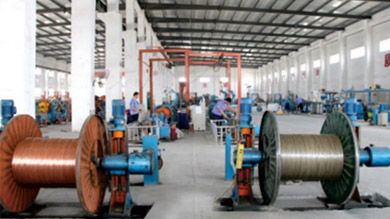Dec . 29, 2024 11:16 Back to list
Ball Type Foot Valve Applications and Benefits for Fluid Control Systems
Understanding Ball Type Foot Valves Function, Importance, and Applications
When it comes to fluid control systems in various industrial and commercial applications, the significance of valves cannot be overstated. Among the numerous types of valves available, the ball type foot valve stands out due to its unique functionality and practicality. This article delves into the characteristics, functions, and applications of ball type foot valves, elucidating their crucial role in the management of fluid systems.
What is a Ball Type Foot Valve?
A ball type foot valve is a type of check valve fitted with a ball mechanism that allows fluid to flow in one direction while preventing backflow. Typically installed at the bottom of a suction line, these valves are submerged in the fluid being pumped and ensure that when the pump is not in operation, the fluid does not drain back into the source, thereby maintaining priming for the pump. The simplicity of the design is one of its major advantages, allowing for efficient operation and durability.
How Does It Work?
The operation of a ball type foot valve is fairly straightforward. It consists of a sphere (the ball) that is held in place by a spring or the force of gravity. When the pump is activated, the pressure of the pumped fluid pushes the ball away from its seat, allowing the fluid to flow through the valve. Once the pump is turned off, the ball returns to its seat due to either gravity or a spring mechanism, effectively sealing the valve and preventing any backflow. This mechanism is crucial in applications where maintaining a column of liquid in the suction line is essential for efficient pump operation.
Importance of Ball Type Foot Valves
1. Prevention of Backflow One of the primary functions of a ball type foot valve is to stop backflow, which can lead to pump cavitation and inefficiencies in fluid transport. By ensuring that the fluid stays in the suction line, these valves protect the equipment and enhance operational efficiency.
2. Efficiency in Pump Operations Maintaining priming is vital in pump operations, especially in water supply systems and other fluid transfer applications. The ball type foot valve ensures that there is always liquid available at the pump inlet, reducing the time needed for pumps to re-prime after being turned off.
ball type foot valve

3. Cost Effectiveness By preserving fluid in the system and preventing damage from backflow, ball type foot valves contribute to lower maintenance and repair costs over time. This makes them a cost-effective solution for many fluid handling applications.
4. Versatility Ball type foot valves are used in various industries, including agriculture, construction, water treatment, and industrial processes. Their adaptability makes them suitable for different environments and conditions, further enhancing their appeal to engineers and designers.
Applications
1. Water Pumping Systems In residential and commercial water systems, ball type foot valves are commonly used to ensure that well pumps and other water supply systems remain primed, providing a steady water supply when needed.
2. Irrigation Systems Farmers and agricultural engineers often employ ball type foot valves in irrigation systems to regulate water flow effectively and maintain system efficiency.
3. Industrial Fluid Transfer In manufacturing and industrial settings, ball type foot valves are used in the pumping of chemicals, oils, and other fluids, ensuring safe and efficient fluid management.
4. Sewage and Wastewater Management They are also essential in sewage systems, where it is crucial to prevent backflow and flooding in different parts of the system.
Conclusion
In summary, the ball type foot valve plays a vital role in countless applications where fluid control is necessary. Its ability to prevent backflow while ensuring pump priming highlights its importance in enhancing efficiency and prolonging the lifespan of fluid transfer systems. Understanding the function and application of these valves helps engineers and operators make informed decisions about their fluid management strategies, ultimately leading to more effective and reliable systems. As industrial needs evolve, the ball type foot valve will undoubtedly continue to be a cornerstone of fluid control technology.
Share
-
Reliable Wafer Type Butterfly Valves for Every IndustryNewsJul.25,2025
-
Reliable Flow Control Begins with the Right Ball Check ValveNewsJul.25,2025
-
Precision Flow Control Starts with Quality ValvesNewsJul.25,2025
-
Industrial Flow Control ReliabilityNewsJul.25,2025
-
Engineered for Efficiency Gate Valves That Power Industrial PerformanceNewsJul.25,2025
-
Empowering Infrastructure Through Quality ManufacturingNewsJul.25,2025